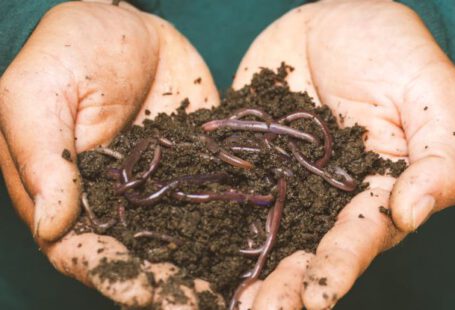Transforming household items into planters is a creative way to add a touch of greenery to your living space while upcycling objects that would otherwise be discarded. Not only does repurposing items into planters help reduce waste, but it also adds a unique and personalized touch to your home decor. From old teapots to rain boots, there are numerous everyday items that can be repurposed into charming planters. Let’s explore some unconventional yet functional ideas for turning household items into planters.
**Vintage Suitcases**
Vintage suitcases can add a touch of nostalgia and whimsy to your indoor garden. By simply drilling a few holes in the bottom for drainage, you can transform a vintage suitcase into a stylish planter. The varying sizes and shapes of suitcases offer versatility in planting different types of plants, from succulents to trailing vines. Place the suitcase planter in a well-lit area to create a striking focal point in your home.
**Mason Jars**
Mason jars are a versatile household item that can be easily repurposed into charming planters. These glass jars provide a clear view of the plant’s roots, adding a modern and minimalist aesthetic to your indoor garden. You can hang mason jar planters in a row using twine for a trendy vertical garden display or place them on shelves for a rustic touch. Succulents, herbs, or small ferns thrive in mason jars, making them perfect for small-space gardening.
**Old Tires**
Upcycling old tires into planters is not only an eco-friendly choice but also a fun DIY project. By painting the tires in vibrant colors or stacking them to create a tiered planter, you can turn an eyesore into a statement piece for your garden. Fill the tires with soil and plant colorful flowers or hearty shrubs to create a bold and unexpected display. Old tires are durable and weather-resistant, making them a long-lasting option for outdoor planters.
**Kitchen Colanders**
Kitchen colanders are not just for draining pasta – they can also make quirky and functional planters. The holes in the colander provide ample drainage for plants, making them ideal for succulents or herbs. Hang a colander planter in your kitchen to have fresh herbs within arm’s reach while adding a touch of greenery to your culinary space. You can also repurpose colanders of different sizes and colors to create a vibrant and eclectic indoor garden display.
**Rain Boots**
Don’t throw away old rain boots – give them a new life as whimsical planters for your garden. Rain boots come in a variety of colors and patterns, adding a playful element to your outdoor space. Fill the boots with soil and plant bright flowers or cascading vines to create a cheerful and eye-catching display. Place the rain boot planters along a walkway or on a porch to welcome guests with a touch of charm and creativity.
**Teacups and Saucers**
Teacups and saucers add a touch of elegance to your indoor garden when repurposed as planters. These dainty and delicate items are perfect for displaying small succulents or air plants on windowsills or shelves. Mix and match teacup and saucer sets to create a charming and eclectic collection of planters. Teacup planters are easy to maintain and add a whimsical and vintage-inspired vibe to your home decor.
**Conclusion: Sprucing Up Your Space with Repurposed Planters**
Repurposing household items into planters not only breathes new life into old objects but also allows you to express your creativity and style in your indoor and outdoor spaces. From vintage suitcases to kitchen colanders, the possibilities for turning everyday items into planters are endless. By thinking outside the box and embracing sustainable practices, you can create a unique and personalized garden that reflects your personality and love for greenery. So, unleash your imagination and start transforming your household items into charming planters that will spruce up your living space in a sustainable and stylish way.





